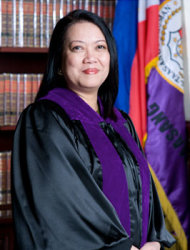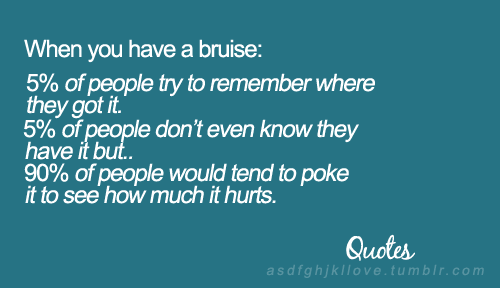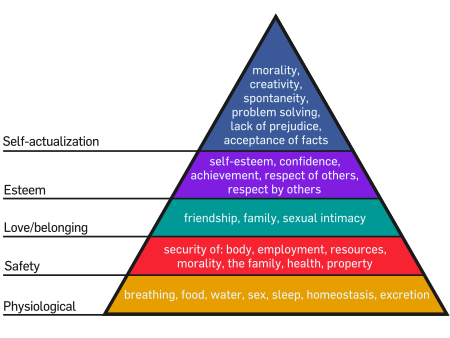
Wednesday, August 29, 2012
Saturday, August 25, 2012
Friday, August 24, 2012
PH gets first ever lady Chief Justice in Lourdes Sereno
(UPDATE) The Philippines has a new Chief Justice.
By Jonathan de Santos | Yahoo! Southeast Asia Newsroom – 2 hours 44 minutes ago

“The President is confident that Chief Justice Sereno will lead the judiciary in undertaking much-needed reforms. We believe the Judicial Branch of government has a historic opportunity to restore our people’s confidence in the judicial system,” Lacierda added.
(UPDATE) The Philippines has a new Chief Justice.
By Jonathan de Santos | Yahoo! Southeast Asia Newsroom – 2 hours 44 minutes ago

Supreme Court Associate Justice Maria Lourdes Sereno makes history as the first woman to be appointed head of the judiciary.
President Benigno "Noynoy" Aquino III on Friday named Sereno as the 24th Chief Justice of the Supreme Court, months after ex-Chief Justice Renato Corona was removed from his post by an impeachment court.
Sereno bested other five Supreme Court "insiders" who were on the JBC shortlist submitted to Aquino such as acting Chief Justice Antonio Carpio (7 votes) as well as Associate Justices Roberto Abad (6 votes), Arturo Brion (6 votes), and Teresita Leonardo-De Castro (5 votes).
Sereno, 52, is the second youngest to be appointed as Chief Justice and will have 18 years before reaching the mandatory retirement age. This means she will potentially have the longest term in recent Supreme Court history. She will also be serving alongside four Presidents: Aquino and the winners of the 2016, 2022, and 2028 national elections.
President Benigno "Noynoy" Aquino III on Friday named Sereno as the 24th Chief Justice of the Supreme Court, months after ex-Chief Justice Renato Corona was removed from his post by an impeachment court.
Sereno bested other five Supreme Court "insiders" who were on the JBC shortlist submitted to Aquino such as acting Chief Justice Antonio Carpio (7 votes) as well as Associate Justices Roberto Abad (6 votes), Arturo Brion (6 votes), and Teresita Leonardo-De Castro (5 votes).
Sereno, 52, is the second youngest to be appointed as Chief Justice and will have 18 years before reaching the mandatory retirement age. This means she will potentially have the longest term in recent Supreme Court history. She will also be serving alongside four Presidents: Aquino and the winners of the 2016, 2022, and 2028 national elections.
Have a happy weekend!!
Mig Salvador
Thursday, August 23, 2012
CELLPHONE EVOLUTION
The first mobile telephone call was made on 17 June 1946 from a car in St. Louie, Missouri, USA , using the Bell System's Mobile Telephone Service. This was followed in 1956 by the world’s first partly automatic car phone system, Mobile System A (MTA) in Sweden. The MTA phones were composed of vacuum tubes and relays and had a weight of 88.2 pounds (40 kg).
Martin Cooper a Motorola researcher and executive, led the team that developed the first hand-held mobile telephone for use on a cellular network. Using a somewhat heavy portable handset, Cooper made the first call on a handheld mobile phone on April 3, 1973 to his rival, Dr. Joel S. Engel of Bell Labs.
The new invention sold for $3,995 and weighed two pounds, leading to a nickname "the brick".
The world's first commercial automated cellular network was launched in Japan by NTT in 1979, initially in the metropolitan area of Tokyo. In 1981, this was followed by the simultaneous launch of the Nordic Mobile Telephone (NMT) system in Denmark, Finland, Norway and Sweden. Several countries then followed in the early-to-mid 1980s including the UK, Mexico and Canada.
On 6 March 1983, the Dyna TAc mobile phone launched on the first US 1G network by Ameritech. It cost $100m to develop, and took over a decade to hit the market. The phone had a talk time of just half an hour and took ten hours to charge. Consumer demand was strong despite the battery life, weight, and low talk time and waiting lists were in the thousands.
In 1991, the second generation (2G) cellular technology was launched in Finland by Radiolinja on the GSM standard, which sparked competition in the sector as the new operators challenged the incumbent 1G network operators.
Philippine ratifies MLC
Philippines ratification marks global milestone for decent work for seafarers
The Philippines is the 30th Member to have its ratification registered and join the group of the “first 30” ILO countries to demonstrate their commitment to ensuring decent work for seafarer and a level playing field for quality shipowners.
GENEVA (ILO News) – On 20 August 2012. Mr Dennis Y Lepatan, Chargé d’affaires, Permanent Mission of the Philippines to the United Nations Office and other International Organizations in Geneva representing the Government of the Republic of the Philippines deposited its instrument of ratification of the Maritime Labour Convention, 2006 (MLC, 2006) with Mr Juan Somavia, Director-General of the International Labour Office. The registration of this ratification marks a global milestone. The Philippines is the 30th Member to have its ratification registered and join the group of the “first 30” ILO countries to demonstrate their commitment to ensuring decent work for seafarer and a level playing field for quality shipowners
Tuesday, August 21, 2012
The 7 Sneakiest Ways Corporations Manipulated Human Behavior By:Karl Smallwood, Jack Hall, Sara Ohlms
The 7 Sneakiest Ways Corporations Manipulated Human Behavior
In a perfect world, there would be no substitute for a quality product offered at a bargain price. But this is not a perfect world, and a lot of times the only thing between mediocrity and market dominance is the kind of devious plan that would make a supervillain proud.
Like ...

(click link below to continue reading )
http://www.cracked.com/article_19833_the-7-sneakiest-ways-corporations-manipulated-human-behavior.html
Friday, August 17, 2012
Pagasa: Expect heavier, frequent rains amid El Nino onset.
By Rio Rose Ribaya | Yahoo! Southeast Asia Newsroom
The sun is out, but could be not for long.
Stronger and more frequent rains are expected to trouble Pinoys until next month, the Philippine Atmospheric, Geophysical, and Astronomical Services Administration (PAGASA) warned.
“We will have wetter conditions compared to the rainy season we usually experience during July, August, and September,” PAGASA senior weather specialist Thelma Cinco said.
Citing the latest climate forecast, Cinco explained the threat of downpours as heavy as what the country experienced from Hanging Habagat could occur more frequently until September.
She added storms as dangerous Typhoon “Ondoy,” which inundated Metro Manila in 2009, could happen again as an effect of El Nino, which is at an early development stage since July.
“Wetter condition in the Philippines is the usual consequence when El Nino is at an early development stage. It enhances the raining activities of (Southwest) monsoon,” Cinco told Yahoo! Southeast Asia.
Stronger and more frequent rains are expected to trouble Pinoys until next month, the Philippine Atmospheric, Geophysical, and Astronomical Services Administration (PAGASA) warned.
“We will have wetter conditions compared to the rainy season we usually experience during July, August, and September,” PAGASA senior weather specialist Thelma Cinco said.
Citing the latest climate forecast, Cinco explained the threat of downpours as heavy as what the country experienced from Hanging Habagat could occur more frequently until September.
She added storms as dangerous Typhoon “Ondoy,” which inundated Metro Manila in 2009, could happen again as an effect of El Nino, which is at an early development stage since July.
“Wetter condition in the Philippines is the usual consequence when El Nino is at an early development stage. It enhances the raining activities of (Southwest) monsoon,” Cinco told Yahoo! Southeast Asia.
The climate expert added that the development towards El Nino in the
Pacific Ocean will also intensify the Westerlies or the winds coming
from the West part of the globe.
The Westerlies is a wind system that signals shift from prevailing Southwest monsoon or Hanging Habagat to Northeast monsoon or Hanging Amihan.
Daisy Ortega, a climatologist in PAGASA Climatology and Agrometeorology Division (CAD), confirmed there is about 72 percent probability of an El Nino occurrence starting October.
Ortega explained that the height of El Nino will bring down the number of rainfall activity in the country from October onwards.
The Westerlies is a wind system that signals shift from prevailing Southwest monsoon or Hanging Habagat to Northeast monsoon or Hanging Amihan.
Daisy Ortega, a climatologist in PAGASA Climatology and Agrometeorology Division (CAD), confirmed there is about 72 percent probability of an El Nino occurrence starting October.
Ortega explained that the height of El Nino will bring down the number of rainfall activity in the country from October onwards.
"Keep safe always...enjoy the long wet weekends everyone!"
Thursday, August 16, 2012
Teamwork Skills
Decision-Making
Decision-making can be one of the greatest challenges and sources of frustration your team faces. Often, the decision-making process is unclear and individual participation is sketchy.
There are several decision making methods, but primarily on: delegating decisions to others and unanimous agreement of the group (otherwise known as consensus).
Both require the development of team skills, and training, but the Consensus (or unanimous agreement) demands a high level of trust among the members of the group. People need to believe that each member is a fair and reasonable person of integrity who has the organization's best interests at heart. There are no perfect groups or perfect individuals, but for consensus to work the members must believe that everyone is honestly doing their best.
Many meetings have ended without a decision, sometimes you have to re-convene and re-hash, to feel that you have to negotiate and compromise in order to achieve partial consensus…and at times achievement supersedes the decision being made. This is why decision making is such an important teamwork skill.
TIPS IN DECISION MAKING:
1 Explore the concepts of routine vs. crucial decisions and how individual preferences can impact the decision-making process.
2. Learn how (and when) to use various decision-making approaches: majority vote, unanimous agreement, flipping a coin, delegation, unilateral with discussion, and unilateral without discussion.
3. Practice decision-making approaches that: expand circles of influence and gain consensus.
Wednesday, August 15, 2012
Friday, August 10, 2012
Aetas own Pinatubo
In January 2010, the Aetas were awarded a Certificate of
Ancestral Domain Title (CADT) covering the entire Mount Pinatubo including the
3-kilometer wide crater lake after being driven out from the expanse by the
angry volcano two decades ago. The total area granted is 15, 984 hectares which
is being shared by the four aeta tribes composed of 7,000 aeta families. The
said title includes the towns of Burgos, Villar, Moraza and Belbel in Botolan
and portions of Cabangan, San Felipe and San Marcelino, all in Zambales. Pinatubo
is said to be rich in white gold, nickel and chromate. The aetas previously had
to deal with miners, loggers and even tour operators who earn from Pinatubo
without compensating the said indigenous tribesmen. According to the Indigenous
Peoples Rights Act (IPRA) of 1997, ancestral domains are lands and natural
resources occupied or possessed continuously by indigenous communities in
accordance with their customs and traditions since time immemorial. A CADT is a
title formally recognizing the rights of possession and ownership of indigenous
cultural communities/indigenous peoples over their ancestral domains identified
and delineated in accordance with the IPRA of 1997. The Aetas were able to
establish that they have been living at Mt Pinatubo since pre-Hispanic times.
Consequently, they now have the lawful right to communally possess and enjoy
the vast region and its resources to the exclusion of others.
IMO Agreement on CO2 Technical Rules
In July 2012, governments at IMO agreed a comprehensive package of technical regulations for
reducing shipping’s CO2 emissions which will enter into force in January 2013. The amendments to the
MARPOL Convention (Annex VI) include:
•A system of energy efficiency design indexing for new ships (similar in concept to the ratings applied to
cars and electrical appliances). The IMO EEDI will lead to approximately 25-30% emission reductions by 2030 compared to ‘business as usual’.
•A template for a Ship Energy Efficiency Management Plan (SEEMP) for use by all ships. The SEEMP allows companies and ships to monitor and improve performance with regard to various factors that may
contribute to CO2 emissions. These include, inter alia: improved voyage planning; speed management;
weather routeing; optimising engine power, use of rudders and propellers; hull maintenance and use of
different fuel types.
Top 10 trekking training tips
Prepare properly for your trek with top 10 trekking training tips.
1. Start your trekking training early
2. Choose the correct footwear for your trek
3. Don’t forget your walking socks
4. Build leg strength with gym work
5. Build your walking training
6. Train on similar walking terrain
7. Practice using your backpack
8. Use walking poles
9. Hydrate yourself frequently when walking
10. Fuel your trekking
continue reading
http://www.realbuzz.com/articles/top-10-trekking-training-tips-gb-en/
1. Start your trekking training early
2. Choose the correct footwear for your trek
3. Don’t forget your walking socks
4. Build leg strength with gym work
5. Build your walking training
6. Train on similar walking terrain
7. Practice using your backpack
8. Use walking poles
9. Hydrate yourself frequently when walking
10. Fuel your trekking
continue reading
http://www.realbuzz.com/articles/top-10-trekking-training-tips-gb-en/
Improved Policy on Sailing During Adverse Weather Condition
Through extensive consultations with partner government agencies, maritime stakeholders and expert groups, a consensus for an improved sailing regulation during typhoons was developed and formulated. The PCG believes that it has promulgated a set of rules that is pro-active yet liberal, preventive yet acceptable to the industry. Contained are the provisions that only vessels of more than 1,000 GT and above may sail when PSWS number 1 is hoisted and that no vessel shall sail when PSWS number 2 is raised in a vessel’s origin or route or destination. Further, only vessels taking shelter shall be allowed to sail during said PSWS numbers, provided that no passenger is onboard.
The new sailing regulation also integrates crucial safeguards and innovations including: (1) a typhoon projection method designed by PAGASA with the appropriate graphical representation published in its regular weather bulletins for easy reference; (2) emphasis on the proper stowage and lashing of cargoes while underway or sheltering; (3) designation of cargo watches to be posted during the entire duration of the voyage or sheltering to ensure the safe condition of cargo lashings; (4) maintenance of communication among the PCG, ship owners and their vessels while underway or during sheltering with communications check to be conducted every 30 minutes for close monitoring of status of vessels; and (5) provision for vessels to take no other option except to take shelter when while underway are caught in a typhoon signal where they are not allowed to sail.
Thursday, August 9, 2012
Port of London hit by fall in crude oil volumes
A FALL in crude oil volumes took the Olympics shine off Port of London’s 2012 half-year results, as total cargo throughputs fell 6.8% to 22.4m tonnes over last year’s like period. Closure of Coryton oil refinery “a big blow”, admits Port of London Authority (PLA ) chief executive.
The PLA said trade has been “dramatically affected” by the difficulties at the Coryton oil refinery. “Crude oil tonnages were down by almost 1m tonnes or 28.13% as production at the refinery was patchy from the beginning of the year, through to the announcement of closure in May,” it said. “A total of 8.3m tonnes of crude oil and oil products was handled at the terminals in the port between January and the end of June.” Tonnages of unitised cargo — containers and ro-ro — were flat at 7.3m tonnes, as were forest products at 582,000 tonnes. Aggregates were down 9.5% to 3.5m tonnes.
PLA chief executive Richard Everitt said: “Overall we have had a very difficult start to the year on port trade. “The Coryton refinery was the biggest single customer of the PLA, handling in excess of 8m tonnes of oil and refined products a year. Its closure is a big blow for a port, with annual throughput last year of 48m tonnes.” Mr Everitt said plans by Vopak, Greenergy and Shell to develop an oil products import terminal on the Coryton site were “very welcome”. “Over the next few months, we will support the development of their terminal plans, and the other operations developing or consolidating on the river. “Inevitably, in the meantime, we have to reduce our costs and look at operational efficiencies as we adapt to lower levels of income.”
Developments under way on the Thames include the London gateway container port, which is expected to open in the fourt quarter of 2012, with teu of annual first-phase capacity.
Article from Lloyd's List
Published: Thursday 09 August 2012
Maritime mystery: Where in the world is Wayne Ball?
A mystery boat is docked at the Naples city dock. It's been there more than a month, but the boat's owner is nowhere to be found. A 30-foot catamaran in perfect condition is tied up at the dock and has seemingly been abandoned. In fact, clothing and other personal items were even left inside. "It's pretty odd. That boat came in and it has just been sitting, it has been abandoned," said Raymond Aiello, with Captain Ray's.
"It is a valuable vessel, it has no liens against it so why it has been here for a month and a half nobody really knows," said Roger Jacobsen, Naples Harbor Master.Estimated to cost around $50,000, "Latitudes" was tracked from Key West using GPS. It was first noticed at the docks on June 7th. The catamaran is registered to 57-year-old Wayne Ball, who hasn't paid a dime of slip fees.
According to searches by city officials, Ball is originally from Georgia, but has lived and worked in Southwest Florida. That's where the chain of clues ends. "We have totally struck out with trying to find this gentleman. We found no second of kin, we found an address in Georgia that was a P.O. Box but found out his mail hasn't been picked up in well over a month," Jacobsen said.
For more than a month, the city has exhausted their resources looking for the boat's owner. They've checked with police, jails, even local hospitals and have collected a file full of paperwork on him - but still can't track him down. "We're kind of at a loss at this point. The city dock isn't looking at this as a crime, we would just like to know where he is and why is his boat here. We want to make sure the gentleman is OK," Jacobsen said.
City officials say they will continue to look for Ball before they consider taking possession of the boat. They're asking the public to help to pinpoint the owner of Latitudes.
Wednesday, August 8, 2012
| Hanjin Heavy Breaks Ground For Php1.2-B Housing Project For Workers |
| By Manila Bulletin |
MANILA, Philippines - Hanjin Heavy Industries and Construction Ltd. (HHIC), -Philippines Inc., which operates the world's fourth shipbuilding facility in Subic Freeport Zone, marked another milestone in its corporate social responsibility program with the groundbreaking of a Php 1.2-billion housing project for its workers.
HHIC President Jin Kyu Ahn said the project will rise on a 30-hectare area in Barangay Nagbunga, Castillejos, Zambales, which the company has bought and donated to the housing project. The Subic Bay Metropolitan Authority (SBMA) welcomed the project, which aimed to provide shelter for shipyard workers and their families as part of the Agency's commitment to guarantee that workers in the Subic Bay Freeport get the best benefits they could from their employers. continue reading by clicking this link http://www.hhic-phil.com/pr/newsroom_read.aspx?bbsID=260 |
Friday, August 3, 2012
Coffee in the Global Economy
Coffee is the world's second most valuable traded commodity, behind only petroleum. There are approximately 25 million farmers and coffee workers in over 50 countries involved in producing coffee around the world. Coffee was traditionally developed as a colonial cash crop, planted by serfs or wage laborers in tropical climates on large plantations of landowners for sale in colonial countries. Coffee producers, like most agricultural workers around the world, are kept in a cycle of poverty and debt by the current global economy designed to exploit cheap labor and keep consumer prices low. An estimated 11 million hectares of the world's farmland are dedicated to coffee cultivation. The largest producer and exporter is Brazil, followed by Colombia, Vietnam, Indonesia, and Mexico. Around the globe, the annual consumption of coffee has expanded to 12 billion pounds.
On Fidelity
Fidelity in human relationship refers to the quality of
being loyal or faithful. The term is derived from the Latin word “fidelis”
which means faithful or loyal and usually denotes observance of marriage vows,
sexual or emotional monogamy or assurances of exclusivity to one’s partner. It
becomes problematic when one partner considers a particular act to be cheating
while the other partner doesn’t see it as a big deal. Each relationship is
unique and the partners need to come to an understanding on what is and what is
not considered a breach of physical fidelity. For example, is it okay for a man
to communicate with his ex-girlfriends or for a woman to flirt with her male friends?
Emotional fidelity, on the other hand, means that even if you devote a lot of time
with friends, co-workers or associates, you don’t allow those relationships to
overcome the emotional fidelity that you have with your significant other.
Jealousy is a response to apparent or potential infidelity, be it physical or
emotional. To maintain fidelity, both partners must be open and honest to each
other and must avoid circumstances which may ripen into fertile grounds for physical
or emotional infidelity.
Thursday, August 2, 2012
Why India Just Suffered the World's Biggest Blackout
India endured the world's largest power failure today (July 31), with a blackout that affected 700 million people, including the nation's capital of New Delhi.
Trains and subway systems stopped, while private businesses and hospitals geared up their generators, the New York Times reported.
Today's blackout followed another large outage yesterday, which affected 350 million people.
Although record-setting in size, the blackout wasn't entirely unexpected.
CONTINUE READING
http://www.livescience.com/22018-india-suffered-world-biggest-blackout.html
Trains and subway systems stopped, while private businesses and hospitals geared up their generators, the New York Times reported.
Today's blackout followed another large outage yesterday, which affected 350 million people.
Although record-setting in size, the blackout wasn't entirely unexpected.
CONTINUE READING
http://www.livescience.com/22018-india-suffered-world-biggest-blackout.html
The Biggest Maritime Disaster In History – the Wilhelm Gustloff
 30 January 1945 – nine hours after leaving port,
and seventy minutes after being hit, the huge ship, theWilhelm Gustloff, slipped
under the waves and sunk. A small fleet of ships and boats
arrived on the scene, and managed to pluck a few from the icy waters and
rescued many of those on the lifeboats. Over a thousand were rescued but… an
estimated 9,343 people died, half of them children – six times the 1,517 that
died on the Titanic. It remains the biggest maritime disaster in history.
30 January 1945 – nine hours after leaving port,
and seventy minutes after being hit, the huge ship, theWilhelm Gustloff, slipped
under the waves and sunk. A small fleet of ships and boats
arrived on the scene, and managed to pluck a few from the icy waters and
rescued many of those on the lifeboats. Over a thousand were rescued but… an
estimated 9,343 people died, half of them children – six times the 1,517 that
died on the Titanic. It remains the biggest maritime disaster in history.
We have all heard of the Titanic. A century after that fateful night, the disaster remains within our
global consciousness. Even before James Cameron’s epic 1998 film, we knew of
the iceberg, the “women and children first”, the band that played on. But how
many of us have even heard of the Wilhelm Gustloff?
The ship was named after the
assassinated leader of the Swiss Nazi Party (yes, Switzerland in the 1930s had
its own Nazi Party), murdered in his own home in February 1936 (Wilhelm
Gustloff, pictured). The ship, the Wilhelm
Gustloff, weighing 25,000 tons and almost
700 feet in length, was an impressive sight, and could carry almost 2,000
passengers and crew. Launched in 1937, it began its life as a luxury cruise
liner for the German workers of Hitler’s Third Reich, and, to the outbreak of
the Second World War, had sailed over fifty cruises.
For the first year of the war the Wilhelm
Gustloff served as a hospital ship before
being held in dock in the port of Gotenhafen (modern-day Gdynia) on the Baltic
coast where, until early 1945, it served as barracks for U-boat trainees.
The Wilhelm
Gustloff, along with any other
serviceable ship in the area, was pressed into service to aid the evacuation of
German civilians. With forty-eight hours notice before departure, the scenes in
frozen Gotenhafen were of panic as people, frantic for a place, fought on the
dock and surged to board the ship.
By the time it left, on 30 January, 10,582 people (40% of whom were
children) had crammed onto a ship designed for less than 2,000. Of the three designated military escorts, two
broke down, leaving one torpedo boat to accompany the huge liner. The ship had
four captains who argued over the best course to take – shallow or deep waters,
a straight line for speed or zig-zags to help avoid detection. Poor visibility,
heavy snow and freezing temperatures further hampered progress.
When the captains were informed of a German minesweeper convoy coming
towards them, they decided, after much argument, to switch on the navigation
lights to avoid colliding into the convoy, but by doing so the ship also became
visible to a Soviet submarine lurking nearby.
The submarine fired three torpedoes, each hitting its target. The
ensuing scenes of panic cannot be imagined. Most of the lifeboats had frozen
onto their davits, leaving only a few useable. As the ship listed to one side,
there were people trapped below decks, others crushed in the stairways, more
falling into the freezing waters, children drowned in lifejackets too big.
People fought and clubbed each other to get onto the few lifeboats, whilst many
jumped to their deaths.
The
sinking of the Wilhelm Gustloff on 30 January 1945 remains the greatest maritime
disaster to ever have taken place. But why, when the tragic story of theTitanic is
so known to us, does the Wilhelm Gustloff remain a forgotten catastrophe...
P&I club becomes first to offer members Kidnap for Ransom cover of $5M limit
THE Standard Club has claimed an industry first in offering its members kidnap and ransom cover. The P&I club has also expanded its product range to include transport liability cover and professional liability cover. It said it believed the move was a first for an International Group club and followed feedback from members.
Other clubs, such as Skuld, offer to arrange K&R cover for members. The Standard Club said its K&R policy is designed for shipowners whose vessels frequently transit high-risk piracy areas. It extends to all associated expenses, including loss of hire, loss of ransom in transit, crew liabilities arising from kidnap, legal expenses and the cost of crisis responders.
The Standard Club said it would handle claims resulting from the piracy cover, with the assistance of Hiscox Syndicate 33 at Lloyd’s. Ransom negotiations will be managed by Control Risks. Ransom payments and associated expenses cover will normally be limited to $5m per insured event and $2.5m for loss of hire, though higher limits can be arranged.
The Transport Traders’ Liability policy covers time charterer’s liability, including P&I and hull damage, freight, demurrage and defence, and liabilities arising from trading operations. Separate limits can be provided up to $500m each for chartering liabilities and trading operations.
The professional liability insurance is designed for shipowners who are responsible for ship agents’ activities and for those who manage third-party ships. It provides cover for agents and managers in relation to a wide range of liabilities including professional negligence, cargo, property damage and personal injury up to a limit of $10m.
Standard Club chief operating officer Jeremy Grose said in offering these new policies, the club was building on the strong relations it has with its members to provide cover that is, in many ways, a natural extension of P&I.
“Many members have told us they would prefer to buy this type of insurance through their club because they like the club’s high level of service and hands-on approach and appreciate the value of seamless cover,” he said.
All three policies are optional and may be purchased in addition to existing P&I cover, and are supported by reinsurance purchased through Lloyd’s and the London market.
Source: http://www.lloydlist.com/11/sector/Insurance/article404170
Subscribe to:
Posts (Atom)







